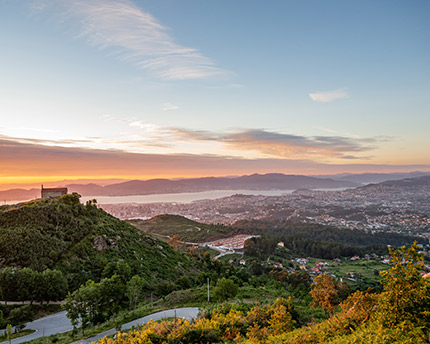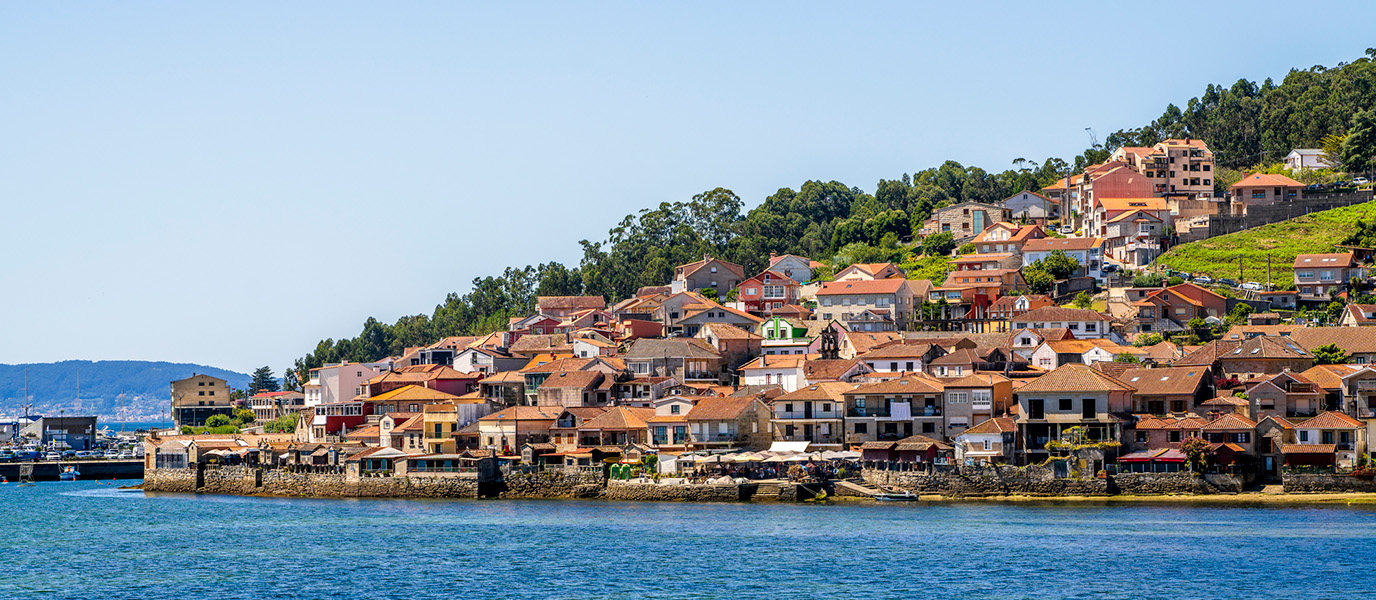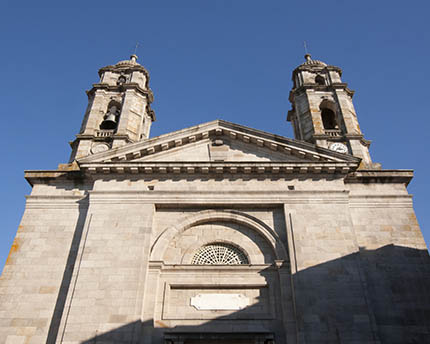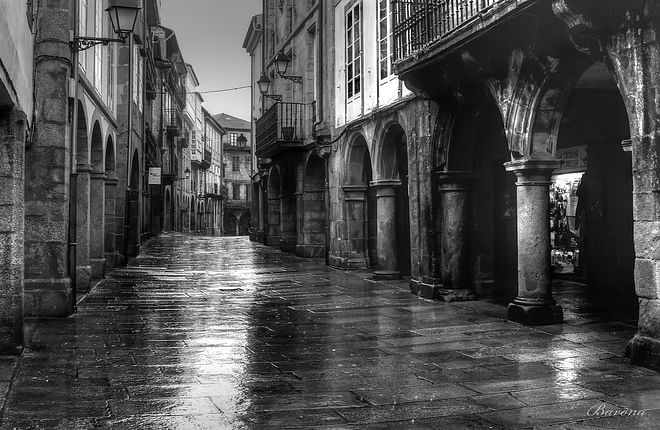Monte O Castro in Vigo, located in the heart of the city centre, is one of the most beloved parks by the people of the municipality and a must see for anyone coming from outside the city.
A place that has been inhabited for over 2,000 years, with buildings that have been vital to the survival of the city for centuries, which also offers some of the best panoramic views of both the city centre and the region in which it’s located, the estuary, and the Atlantic Ocean.
Since the middle of the 20th century, the landscaping of this place has been cared for, leading to the creation of recreational spaces for the young and old alike. Here you can find both children’s playgrounds and sports facilities to keep fit, as well as plenty of trees and rest areas.
History of Monte O Castro in Vigo
The history of Monte O Castro in Vigo is inextricably linked to the development and survival of this area over time. In fact, the origins of present-day Vigo can be traced to this very point. This is where the first settlers established themselves around the 3rd century B.C., probably because of its strategic position, which allowed them to control the estuary and a good part of the coast. In this way, they were able to continue their agricultural, livestock, and fishing activities without too much trouble.
Those original inhabitants settled in castros, or fortified settlements, the typical circular stone structures that are a feature of so many other Galician settlements of Celtic origin. Some 45 of these dwellings are preserved on Monte O Castro, as we’ll discuss below.
By the Middle Ages the town had grown to the point of needing a strong fortified defence system. For this reason, a castle was built on Monte O Castro. This structure was remodelled and strengthened during the 17th century, connecting it through what were the old city walls to the castle of San Sebastián. However, it was overcome during the Battle of Rande in the early 18th century.
Monte O Castro was also important during the Napoleonic invasion at the beginning of the 19th century, becoming a point of resistance for the people of Vigo, who eventually defeated the French troops.
In 1934, during the Second Republic, the Ministry of War ceded the management of the mountain to the municipality, which marked the beginning of its transformation into the large urban park and archaeological area that is now Monte O Castro.
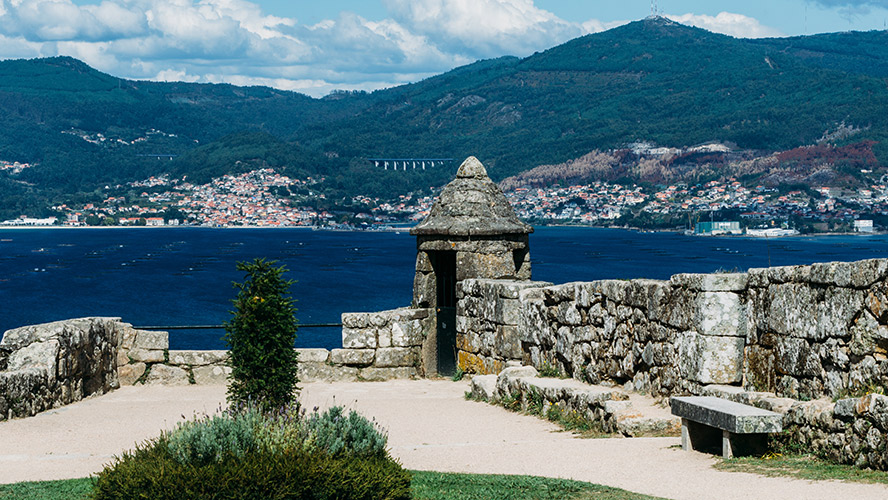
How to get to Monte O Castro
The city offers two main routes to Monte O Castro that you can cover on foot. Firstly, from the Plaza de España. The route to the top is just under a kilometre long, although it’s quite steep. So we recommend taking it easy, stopping to enjoy and admire the different attractions and scenic spots along the way. It can also be accessed from Calle Camelias, on a slightly less steep route, taking advantage of the escalators from the Puerta del Sol.
Another option for those who have difficulty walking (or for the less energetic) is to take your own vehicle or a taxi up to the start of the fortification. From there it’s only a few dozen metres to the summit.
Although a little further away from this point, another alternative is the stop for the urban bus lines 11, 17, C3 D, U2, XG621, and XG883B, located in the Plaza del Rey. From there, you can reach the park in several minutes on foot.
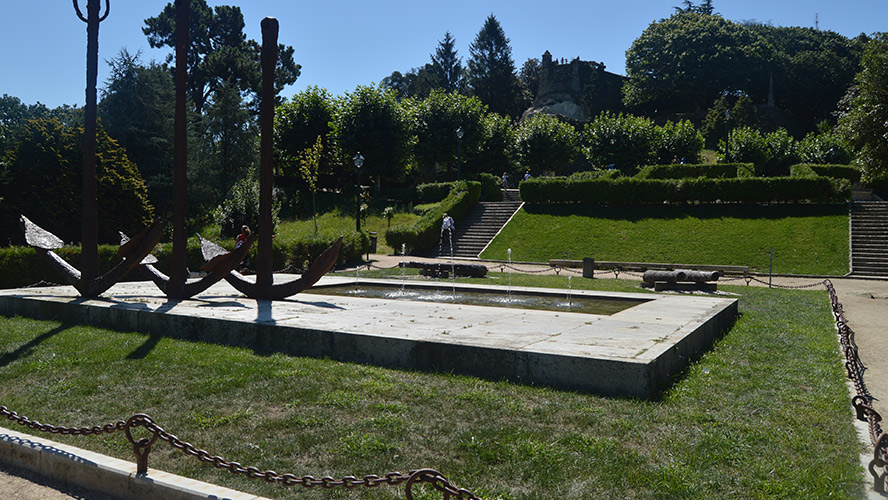
What you can see at the top of Monte O Castro
Apart from the pleasure of walking through this carefully landscaped area of transformed nature and the magnificent views of the rest of the city and the estuary, on Monte O Castro you can enjoy the following sights:
- Anchors Monument
It commemorates the sinking of the dozens of galleons attacked and sunk by the English during the Battle of Rande in 1702, in front of the city. The monument is the work of the artist Desiderio Pernas and consists of three of the anchors of those ships.
- The Castle
Although it’s medieval in origin, what you can see today of this building dates from the mid-17th century. It was a large fortification made up of three parts: the castle itself, located on Monte O Castro, linked by a series of ramparts (no longer standing) to the castle of San Sebastián.
- Pond
This is one of the most photographed areas of Monte O Castro and rightly so. It’s actually an ornamental fountain, surrounded by gardens in the neo-classical style and presided over by the sculpture of the three sailors holding the castle. In other words, the symbol of the city.
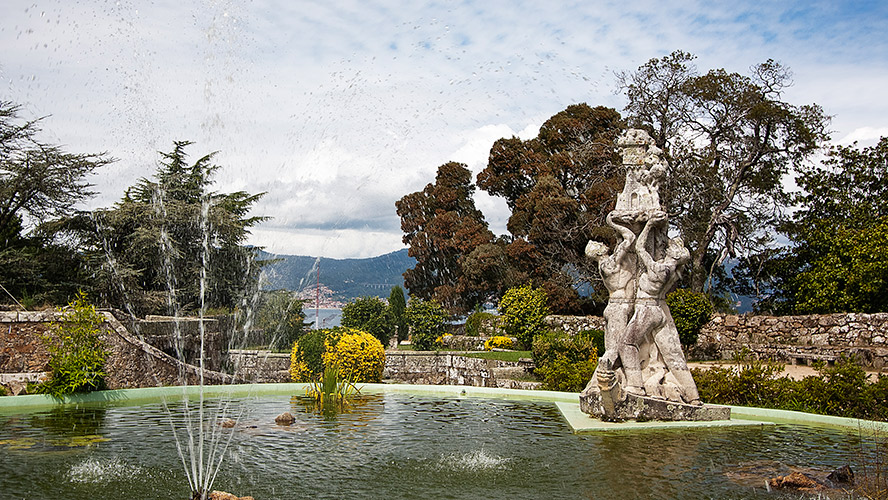
- Viewpoints
On Monte O Castro there are several viewpoints located both at the top and along the access route to the castle. From all these points, you can see the city of Vigo, its maritime surroundings, and the nearby mountains at great heights. The triangular, amphitheatre-shaped, tiered viewing platforms are spectacular.
- Archaeological site
Located in the lower part of the mountain and park, it groups together some 45 structures of the Castro style. In fact, three of them have been reconstructed, including their thatched roofs, which gives us an insight into the way of life in the Galician castros a little over 2,000 years ago.
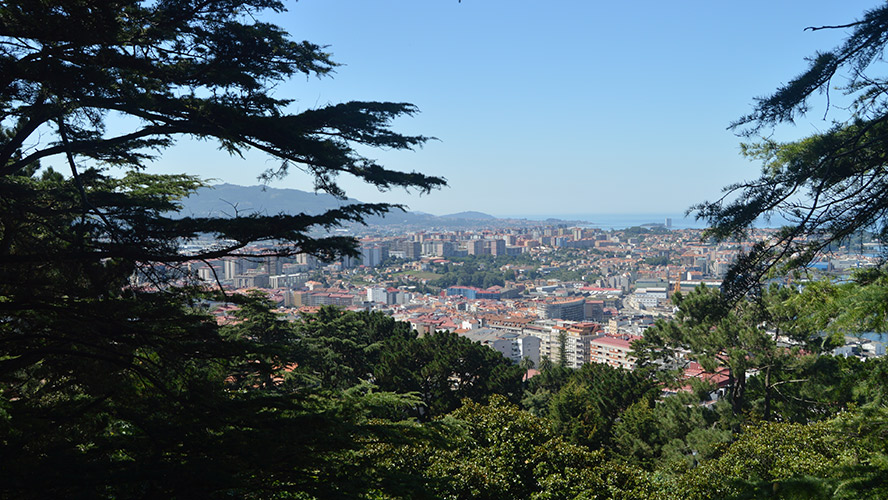
Where to stay in Vigo
The Occidental Vigo hotel is located in the city centre and offers magnificent views. It’s a very comfortable four-star hotel that has 104 rooms. All of them have been decorated in a cosy and practical way and are ideal for people who come to Vigo on a business trip, as well as for families and friends who want to enjoy all the attractions and cultural, gastronomic, and entertainment opportunities that this city has to offer.
One of the most popular places at this accommodation is the snack bar, which is open between 7.00 a.m. and 11.00 p.m. and is ideal for a coffee or an aperitif at any time, with the best views of the estuary. In addition, the buffet breakfast allows you to enjoy all kinds of local and international delicacies. And the more active guests can make free use of the well-equipped gym.




































































